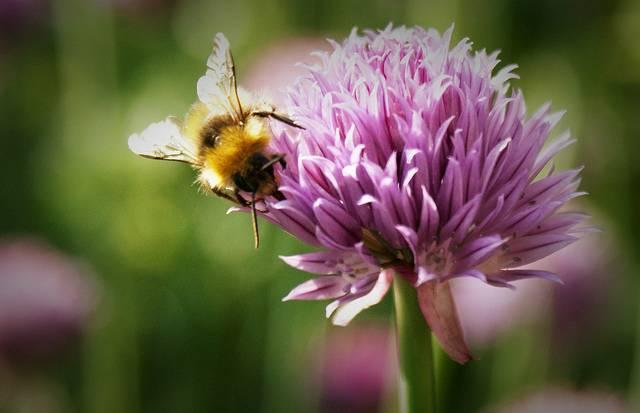
On inauguration day, President Donald Trump signed an executive order implementing a federal regulatory freeze. Among other things, the order delays adding the rusty patched bumblebee to the endangered species list.
In early January, the U.S. Fish and Wildlife Service announced that it would list the rusty patched bumblebee as endangered. But that will now be delayed from Feb. 10 to March 21, according to the federal agency’s website. Xerces Society, the organization that filed a petition back in 2013 with the FWS to have the bumblebee species listed as endangered, is hopeful that the delay is “just that, a delay,” it stated in a press release.
But the Natural Resource Defense Council (NRDC) is more concerned. “The Trump administration has put the rusty patched bumblebee back on the path to extinction,” Rebecca Riley, senior attorney for the NRDC, said in a statement. “This bee is one of the most critically endangered species in the country and we can save it – but not if the White House stands in the way.”
Bumblebees are key pollinators, and they are necessary to propagate certain crops such as blueberries and tomatoes as well as for native flowering plants. Native pollinators like bumblebees create an estimated $9 billion a year economic value in the U.S. alone.
The rusty patched bumblebee badly needs protection
The rusty patched bumblebee is in desperate need of endangered species protection, as the FWS’ own rule shows. Before the mid to late 1990s, the bees were “widely distributed” in 31 states and Canadian provinces. Since 2000, they have been reported in only 14 states and provinces -- and their populations fell by 88 percent.An FWS analysis found that the “resiliency, representation and redundancy” of the rusty patched bumblebee have declined since the late 1990s and will continue to decline during the next several decades.
Many populations of the rusty patched bumblebee have not been “reconfirmed since the early 2000s,” according to the FWS, and they may no longer “persist.” In addition to the population decline, there is a decline in the range of the bee’s habitat. Since 2000, the bees lost 87 percent of “spatial extent” within their historical range. And such the losses make the bee “vulnerable to extinction.”
Several factors are contributing to the decline of the rusty patched bumblebee. One is pesticides, namely a class of insecticides called neonicotinoids used to target pests that affect agricultural crops, forests, turf and gardens. According to the FWS, these insecticides have been “strongly implicated” in the overall decline of bees and “specifically” for the rusty patched bumblebees. Neonicotinoids have been widely used in the U.S. since the early 1990s, and the use of these pesticides is predicted to increase.
Habitat loss and degradation is another cause of the decline of the rusty patched bumblebee, as is climate change. The bees historically occupied the native grasslands of the upper Midwest and Northeast, but much of those fields have been lost or are fragmented. The estimates of native grassland losses since the European settlement of North America are as high as 99.9 percent. Habitat loss may continue to contribute to the decline of the bees.
Certain impacts of climate change can also affect the bees, including increased drought, flooding and storm events, higher temperatures, more rain, early snow melt, and late frost.
Will we soon put these bees under official protection? Only time will tell.
Image credit: Flickr/Matt Clark

Gina-Marie is a freelance writer and journalist armed with a degree in journalism, and a passion for social justice, including the environment and sustainability. She writes for various websites, and has made the 75+ Environmentalists to Follow list by Mashable.com.














